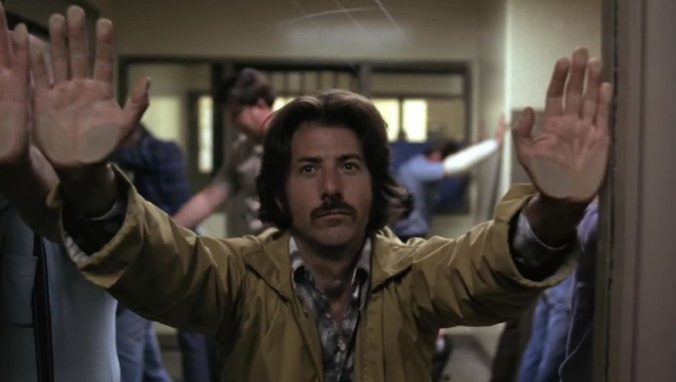Ciné Chillers: Which 'Suspiria' is Superior?
- Tyler Banark
- Oct 24, 2021
- 4 min read
When October rolls around, scary movies become widely popular in preparation for spooky season. Children are watching whatever spooky shows are on Disney or Freeform, teens are gathering around to watch the freshest horror flicks on Netflix, and horror fans are going to theaters to see the latest installment in the Halloween franchise. However, Halloween isn’t the horror flick to see its premise revisited. A recently redone witch flick that may come to mind is Suspiria. The big question is, which version is better? Upon watching Luca Guadagnino’s 2018 remake, I couldn’t help but compare and contrast what I was watching to Dario Argento’s 1977 original. Let’s take an in-depth look at the two.
Spoilers ahead.

Right out of the gate, both movies are set during the same time frame of the late 1970s. However, unlike the original, Guadagnino’s remake refers to the events of what is referred to as the German Autumn, a time when numerous powerful political figures of West Germany were kidnapped, which led to a political divide in the country and civil unrest in cities throughout the country. The Cold War intensified as Germany became a center point for the politics between the US and USSR. Germany’s stance became vital that the country divided into East and West Germany, with the Berlin Wall being the dividing point between the two sides.
On the contrary, Argento’s film takes place in southwestern Germany, so the German Autumn may not be as big of a deal there as in some of the bigger German cities. Personally, I didn’t understand the inclusion of the German Autumn as a part of the plot in the remake other than to establish when the story is taking place. I don’t think it adds any substance to the plot. Argento’s film doesn’t showcase the German Autumn in any sort of way.

Aside from the location of the films, the two versions of Suspiria have somewhat different scenarios. Both movies have the set-up of Pat Hingle, a woman dealing with trauma from Tanz, fleeing the Tanz Dance Academy and going missing right as protagonist Suzy arrives to begin enrollment. However, Guadagnino makes her disappearance more vital to the story than Argento. The first few minutes of the movie involve Pat speaking to her psychotherapist before her disappearance. She eventually returns, but in a withered physical condition. Furthermore, Pat appears one last time in the finale during the ritual.

On the other hand, Argento’s original sees Pat die in the beginning, and she is only brought up in reference throughout the remainder of the film. There is also the subplot of Pat’s psychotherapist hoping to reunite with his long-lost wife while searching for clues to Pat’s disappearance and if the teachers at Tanz are behind it. Still, this aspect of the story is never fully fleshed out, and I do wish Argento had explored it in greater detail.

As for the color schemes, Argento’s is flashy, moody, and colorful like a Jacques Demy film. When I first saw the original, I thought the color scheme was indecisive. Looking back, that wasn’t a fair statement; it's just a little bit overwhelming. Guadagnino, on his end, employs a color scheme of red and beige, which makes for less palpable eye candy than in Argento's.

The ritual is the climax in Guadagnino’s rendition. Suzy is summoned to a room where other dancers and faculty are entranced while Mother Markos is fully revealed in her proper form. The ritual leads to the deaths of Sara, Pat, and Olga, and Suzy is revealed to be Mother Suspiriorum. Meanwhile, Argento’s film sees Suzy drawn into Madame Blanc’s office. She then tries to escape the school while being pursued by Mother Markos. She succeeds, and the school burns to the ground.

Some other aspects I noticed when comparing these movies involved the kinds of students at Tanz. In Argento’s film, Tanz is a co-ed dance school where boys and girls take classes together. There are even two lead male characters, Albert and Daniel, who become essential to the plot. However, there are virtually no men in Guadagnino’s movie. Pat’s psychotherapist is the only prominent male character in the film, but he’s played by Tilda Swinton, who also plays the characters of Madame Blanc and Mother Markos. Having no men in the remake did resonate with me because it showcased how empowering women can be in the horror genre.

So, which version of Suspiria is better? Personally, I felt that Guadagnino’s take had a more deliberate execution than Argento’s, but not always in the best way. My take is that it takes itself too seriously. On the other hand, Argento’s film hasn’t quite stood the test of time in terms of being one of the most iconic horror films from the 70s. If I were to ask someone to name scary movies from that period, they would probably mention films like Carrie, The Exorcist, Alien, Halloween, or The Texas Chainsaw Massacre. Whether you prefer Argento’s 1977 turn or Guadagnino’s 2018 remake, the two renditions of Suspiria really aren’t all that identical in terms of plot OR style. The remake's unique interpretation makes it easier to appreciate both films without betraying any sense of loyalty to the original.
-Tyler


Comments